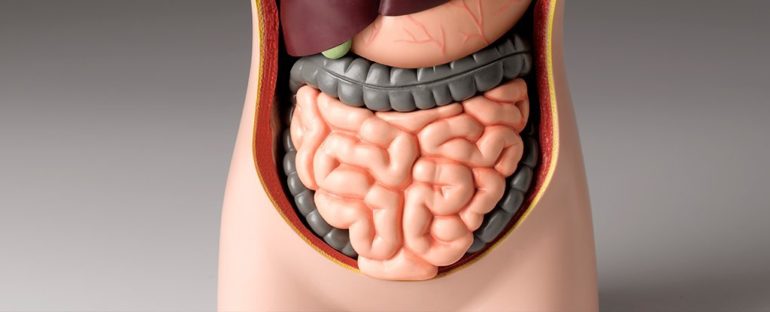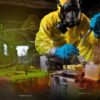The human body is a league of nations for an unfathomable variety of microbes, kept in check by complex relationships with our immune system and carefully crafted truces with each other.
Every now and then members of that microscopic community develop a taste for invasion, causing chaos as they stream across borders. For people with severe inflammatory bowel disease (IBD), a strain of oral bacteria could be doing just that.
A genetic analysis of more than a dozen strains of one common bacterium, Campylobacter concisus, has uncovered a short sequence of DNA that might explain why this guy is a law-abiding citizen when at home in the mouth, but a potential terrorist in the gut.
“Oral bacteria enter the digestive system every day when we swallow food or saliva,” says biomolecular scientist Li Zhang from the University of New South Wales (UNSW), Australia.
“Most of the bacteria are killed by acids in the stomach, but some can survive and colonise in the intestines. The bacteria might not have colonised for long, but the mouth keeps bringing a constant supply of new bacteria – that’s the problem.”
Generally speaking, many microbes in the genus Campylobacter are bad news for the human digestive system. If you’ve ever had a gut-wrenching stomach bug that’s sent you running for the bathroom while on an overseas holiday, there’s a good chance this tiny horror was behind it.
Since such disease-causing species are typically at home in other animals’ intestines, we tend to pick them up by consuming contaminated meat or water.
C. concisus isn’t quite like its more pathogenic cousins. This species we can call our own, living happily under an ocean of spit in virtually all healthy humans.
But in recent years, medical researchers have suspected C. concisus might not always be the peaceful citizen we’d expected it to be. Bacterial markers associated with the microbe are suspiciously linked with active incidences of the intestinal condition Crohn’s disease, for example.
Together with ulcerative colitis, Crohn’s falls into a category of IBD characterised by a serious inflammation of the gut wall and surrounding tissue. The result is anything from diarrhoea and discomfort to blood in the stool, agonising pain, and weight loss.
In the cases where drugs or lifestyle changes do little to help, surgical intervention can be necessary, making it one serious illness to contend with.
Exactly what sets these inflammatory bowel diseases off in the first place isn’t entirely clear. Diet and stress are thought to merely aggravate symptoms, with genetics, medications, and environment all playing a potential role in their development.
What is clear is that it’s a complex condition. Clinical research is increasingly suggesting at least a few C. concisus strains are associated, though pinning the blame on them will take a lot more evidence.
A few potentially pathogenic strains have had their full genomes analysed already, but to date there haven’t been any genomes from healthy individuals to compare them with.
In this most recent study, a further 13 genomes were successfully assembled from strains of C. concisus taken from both healthy controls and individuals with inflammatory bowel disease.
This handful of DNA libraries provided the team with a basis to compare the genetics of more than 230 strains collected from 146 people around the world. Among them were 120 strains from patients with Crohn’s disease and severe ulcerative colitis, a number of whom were undergoing surgery for their disease.
From this wealth of genetic data the researchers sifted out common details.
One tiny ring of DNA called a plasmid stood out – a sequence of just two genes coded pSma1.
“A plasmid is outside the bacteria’s chromosomal DNA,” says the study’s lead author, UNSW biotechnology researcher Fang Liu.
“It’s considered a mobile genetic element, which means it can be transferred between different strains of the bacterium or even different species. If the plasmid carries any virulence genes, the bacteria could gain that virulence.”
While small, the plasmid was found in large numbers inside strains of C. concisus taken from people with inflammatory bowel disease, particularly in those with ulcerative colitis.
That said, it was also identified in two strains taken from a pair of healthy control subjects, suggesting the story is likely to be far more complicated than simply possessing a trouble-making strain of the bacterium.
More research will help pull apart the mechanisms at work. While it’s possible that pSma1 allows C. concisus to take advantage of an already inflamed gut, their potential role in antagonising, if not starting the disease would open the way for more treatments.
For the estimated 6.8 million individuals worldwide contending with the symptoms of IBD, the discovery could be life-changing.
“If we find out the plasmid plays a role in the pathogenesis, it could be quite easy to translate this finding into clinical use,” says Zhang.
“Treatments targeting the oral cavity could help reduce the load of the bacteria. We may not be able to eradicate this bacterium, but we could certainly reduce the load.”
This research was published in Microbial Genomics.



